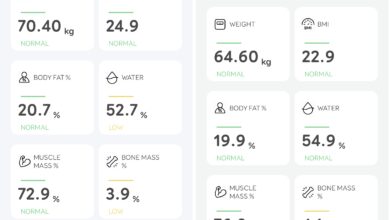With most of us working from home, a proper desk setup is essential for us to save our eyes and muscles in upper body from RSI (repetitive stress injury). One question that I hear a lot these days is “What computer monitor to buy?”. Here is are few points that you have to consider before buying a computer monitor.
Cheaper is not better
You may see a 27″ computer monitor available under 15k rupees or you may see a 24″ monitor for 7000 rupees. Anything that is too cheap for the size and resolution should be avoided. These are not sub-10k smartphones that you throw away and buy another. Majority of us keep a PC monitor for at least 3 years, most of us keep it till it lasts.
The problem with cheap displays is that they come with lower quality panels, almost all these cheap panesl have severe backlight bleed or bad color accuracy. Paying just a bit more not only gives you better panel, it also keeps you away from service centre. Deal pixels is a common issue where a pixel or few pixel will die and get stuck in one color. Also, it is much better to have a 24″ display with quality panel than a 27″ display with cheap panel.
Bigger is not better
I recently got really tempted by Dell D3218HN. This is a 32″ FullHD display and is available for just 16.5k in some online stores. I almost almost purchased it. Then I tried using my home 32″ FullHD TV as external display. That is when I understood that bigger is not always better. After using the 32″ TV for 30 minutes, my eyes were burning. Even if you ignore that, the text was not at all sharp and watching a movie from this close is never safe. We sit within a feet from computer displays and if you are going for a large display, make sure that it comes with all kinds of protection for eyes like anti glare, flicker free, blue light filter etc.
Which Panel type to choose
Avoid TN panel any given day. These TN panels are from early days of LCDs and they have extremely bad color reproduction. If you are content creator, go with IPS or VA panel with very high color gamut support (atleast 99% Adobe sRGB). If you are a gamer, go with VA or IPS panel with high refresh rate, support for G-Sync and low response time. If you are need a monitor for programming or browsing, either VA or IPS with 60-90Hz refresh rate will do and it does not matter what response time should be.
Ideal size and resolution
Stick to FullHD or 2K resolution if you are going for a 24″ or lower size display. For 25″-27″, go with 2K or 4K resolution. Anything from 32″ require 4K resolution if you want to have sharp and clean text. If you pick a 27″ or 32″ display with FullHD, you will for sure see pixelated text and videos.
Curved or flat, single or dual
If you have decided to only have a single display, a 27″ 2K curved display or 32″+ 4K curved will provide one hell of an experience. Do not even think of curved displays if you are going for multi display setup. Also, a 24″ curved display is useless as you will not really notice the curvature. Only when you go beyong 32″, you will really notice advantages of a curved display. But then a 4K 32″ curved display would cost a bomb. For programmers and gamers, 24″-27″ single or dual monitor flat panel, minimal bezel setup will be perfect. Make sure you make sure these factors are looked into
- Super thin bezels. Gives great experience and better to stack these.
- VESA mount support to mount it to a standard wall mount.
- Stick to same brand to use dual arm display stands that brands like Dell sell.
- One of the two should have rotate support so taht you can setup one in portrait and one in landscape mode for surfing and reading. Eg; Dell P2419H.
Which brand?
My first choice brand for displays would be Dell. Even the one that I purchased almost a decade ago is still working. And as of now, I have two 24″ displays and after so many years, there is not even a single dead pixel. Both are S series display. Another advantage is that all Dell displays come with VESA mount compatibility. Next brand that I would trust is LG, then comes BenQ and Samsung.
Color gamut is all about
Color accuracy. A display with higher color gamut will show colors the way the video creator wanted you to see. If you are a content creator of if you want to edit photos/videos, you must buy displays with higher color accuracy. There are lot of standards that measure a display’s color accuracy and range (sRGB, Adobe RGB, NTSC, EBU, and DCI-P3). Among these, sRGB and Adobe RGB are widely used. The higher the ratings are (eg: 98% etc), the better it is.
Keep an eye on ports
The best way to cut costs is by skimping on ports. For me, Dell P2419H is one one of the best displays around 15k as it comes with four USB ports, HDMI port, VGA port, DisplayPort, USB upstream port.
Ignore built in speakers
If there is one useless feature in a display, that would be built-in speakers. A 100 rupee speaker that you can buy road side would any given day sound better than those tinny speakers you get in monitors. Do not even consider this as a buying point when you are comparing two monitors.
Bezels and cable management
A display that offers high cable management should rank higher in your list compared to display that comes with stand that looks extremely good. There is no point in getting a stand that looks great but with cables dangling from monitor. Many displays come with stand that can hide your power and display cables.




